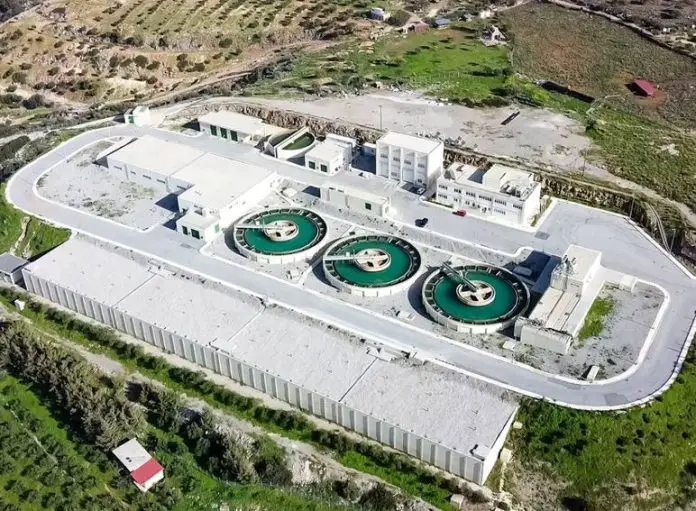Municipal utilities are responsible for supplying large communities with water, power, and natural gas. These utilities are run for the benefit of the community, with the primary goal of providing reliable and affordable services to residents and businesses. They are usually public facilities, managed by a federal, state, or local government entity, rather than a private company.
Some of the most common municipal utilities include:
- Electricity
- Water
- Sewer
- Natural gas
- Trash and recycling collection
- Broadband internet
There are several advantages to having municipal utilities. One benefit is that they are typically less expensive than investor-owned utilities. This is because municipal utilities are not beholden to shareholders who demand profits. Instead, they can reinvest their earnings back into the community to improve infrastructure and keep rates low.
Another advantage of municipal utilities is that they are more accountable to the public. Since they are owned by the local government, they are subject to public oversight and must answer to the needs of the community. This can lead to more responsive customer service and a greater focus on sustainability and environmental protection.

Design of Municipal Utilities
Civil engineering plays a vital role in designing, constructing, and maintaining municipal utilities.
Water Systems
- Hydraulics and Hydrology: Civil engineers use their knowledge of fluid mechanics to design pipe networks. This involves calculating water flow rates, pressures, and potential surges to ensure adequate supply throughout the system. Additionally, they consider rainfall patterns and drainage areas to design stormwater management systems that prevent flooding.
- Water Treatment Plants: These facilities require expertise in structural engineering to design robust buildings and tanks. Additionally, understanding sedimentation, filtration, and disinfection processes is important for designing efficient treatment units.
Wastewater Systems
- Sanitary Sewer Design: Civil engineers design sewer systems that efficiently convey wastewater using gravity or pumping stations. They consider factors like pipe slopes, diameters, and flow velocities to prevent blockages and ensure proper flow.
- Wastewater Treatment Plants: Similar to water treatment plants, these facilities require structural design for buildings and tanks. Additionally, civil engineers design treatment processes like settling basins, aeration units, and disinfection systems.

Stormwater Management
- Drainage Networks: Civil engineers design storm drain systems that collect and convey rainwater runoff from streets and properties. This involves designing channels, culverts, and detention ponds to manage stormwater volume and prevent flooding.
- Erosion Control: To minimize soil erosion during heavy rains, civil engineers design slopes, swales, and retention ponds that slow down water flow and prevent soil loss. They may also incorporate bioengineering techniques like vegetation buffers.
Designing municipal utilities involves a complex interplay between several factors:
- Functionality: The core aspect is ensuring the system efficiently delivers its service like water reaching every tap or electricity flowing reliably. Pipe sizes, pumping stations, and treatment facilities are all designed for capacity and functionality.
- Durability and Resilience: Utilities are built to last for decades, enduring weather, wear, and even natural disasters. Material selection, construction methods, and redundancy measures all factor into a resilient design.
- Safety: Public safety is very important. Underground utilities are placed at specific depths and with proper separation to avoid accidental damage during construction or future maintenance. Sewer systems consider potential health hazards and proper ventilation.
- Growth and Efficiency: As communities grow, utility design should consider future expansion needs. Flexible layouts and easily upgradable components are important. New technologies that improve efficiency, like water-saving plumbing or smart grids for electricity, are also incorporated into modern designs.
- Environmental Impact: Sustainable practices are increasingly important. Stormwater management systems reduce flooding and pollution. Water treatment facilities should consider eco-friendly processes. Some designs even integrate renewable energy sources like solar panels on water towers.
Overall, municipal utility design is a blend of engineering expertise, long-term planning, and keeping pace with evolving technologies and environmental considerations.

Risk Management for Municipal Utilities
However, municipal utilities are susceptible to various risks, and it all depends on how well this risk is managed. Operational stability, compliance with regulations, and public safety all rely on proper risk management for municipal utilities, so in the text below, we will discuss some of the important aspects of this process.
Identifying risks
Municipalities must be aware of the circumstances that can pose great danger to the utility’s operations. To ensure municipal utilities’ safety and compliance, they work together to come up with a list of potential dangers, and they use techniques like brainstorming and analysis of past data. For example, local governments can evaluate the potential of earthquakes and floods to cause infrastructure damage and how to work to mitigate those risks.
Assessing the risks
Once the risks are identified, the authorities must do their best to assess and evaluate them. They use various qualitative tools to come up with the best solutions and a precise assessment of all the dangers to public utilities.
Mitigating risks
The primary focus of mitigating risks is to reduce the severity of the dangers that threaten to harm public life quality. Possible approaches to this task include infrastructural improvements, technology adaptation, and contingency planning. When it comes to power outages, for example, municipalities can invest in backup power systems to lower the chances of unpleasant outages.
Risk management
Authorities must regularly check up on whether something has changed or if there is some danger to any of the utilities. They must work tirelessly on assessing risks, keeping the data fresh, and evaluating risk management to check whether all operations are relevant and able to keep the dangers away. This proper risk management ensures that possible new dangers are identified and solved quickly before they put everyone at risk.
Operational risks
Operational risks include those from malfunctioning equipment, natural catastrophes, and human mistakes. If such things happen, then the whole service delivery is disrupted and it can compromise public safety. For example, during floods, there may be power and clean water outages, which greatly harm the normal functioning of public life.
Also, if the utilities are not handled properly or if there is some major human mistake, it can have devastating effects. Disaster preparation plans and regular maintenance are all important preventive measures to keep operations risks as low as possible.
Financial risks
Financial risks include lack of money, unpredictable costs, and ineffective billing processes, all of which can make the quality of service lower, as the utility may not be able to invest in upgrades and regular maintenance.
Regulatory risks
Every municipal utility must adhere to all federal, state, and municipal rules and regulations. If they don’t, they risk penalties, high costs, and a tarnished reputation.
Managing risks for municipal utilities is of great importance as it helps provide vital services to everyone. Identifying, assessing, mitigating, and managing risks are all necessary steps to ensure utilities protect their assets, stay relevant to laws and regulations, and keep public safety at the top level.










